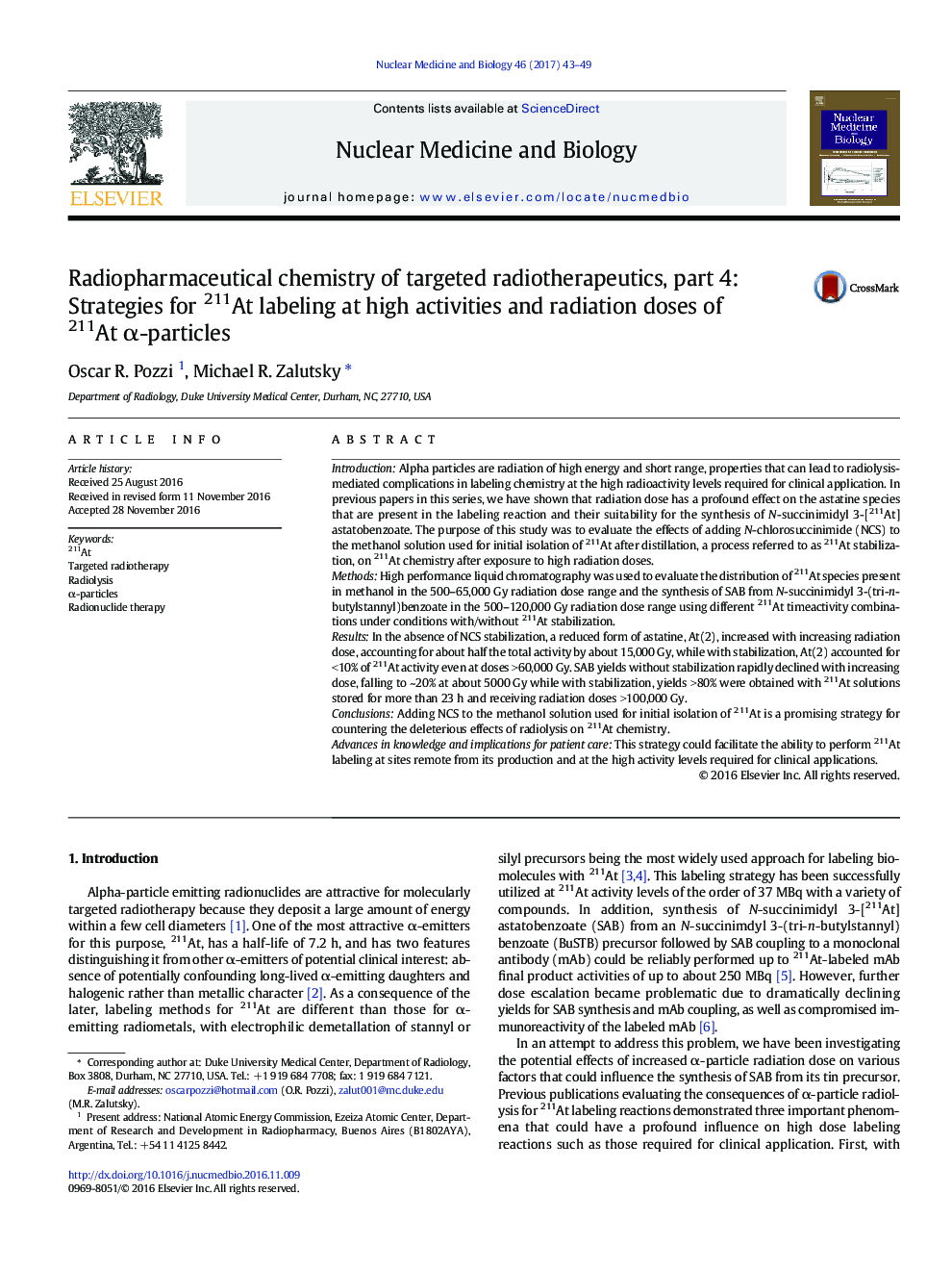| کد مقاله | کد نشریه | سال انتشار | مقاله انگلیسی | نسخه تمام متن |
|---|---|---|---|---|
| 5529014 | 1548831 | 2017 | 7 صفحه PDF | دانلود رایگان |

IntroductionAlpha particles are radiation of high energy and short range, properties that can lead to radiolysis-mediated complications in labeling chemistry at the high radioactivity levels required for clinical application. In previous papers in this series, we have shown that radiation dose has a profound effect on the astatine species that are present in the labeling reaction and their suitability for the synthesis of N-succinimidyl 3-[211At]astatobenzoate. The purpose of this study was to evaluate the effects of adding N-chlorosuccinimide (NCS) to the methanol solution used for initial isolation of 211At after distillation, a process referred to as 211At stabilization, on 211At chemistry after exposure to high radiation doses.MethodsHigh performance liquid chromatography was used to evaluate the distribution of 211At species present in methanol in the 500-65,000Â Gy radiation dose range and the synthesis of SAB from N-succinimidyl 3-(tri-n-butylstannyl)benzoate in the 500-120,000Â Gy radiation dose range using different 211At timeactivity combinations under conditions with/without 211At stabilization.ResultsIn the absence of NCS stabilization, a reduced form of astatine, At(2), increased with increasing radiation dose, accounting for about half the total activity by about 15,000Â Gy, while with stabilization, At(2) accounted for <10% of 211At activity even at doses >60,000Â Gy. SAB yields without stabilization rapidly declined with increasing dose, falling to ~20% at about 5000Â Gy while with stabilization, yields >80% were obtained with 211At solutions stored for more than 23Â h and receiving radiation doses >100,000Â Gy.ConclusionsAdding NCS to the methanol solution used for initial isolation of 211At is a promising strategy for countering the deleterious effects of radiolysis on 211At chemistry.Advances in knowledge and implications for patient careThis strategy could facilitate the ability to perform 211At labeling at sites remote from its production and at the high activity levels required for clinical applications.
Journal: Nuclear Medicine and Biology - Volume 46, March 2017, Pages 43-49